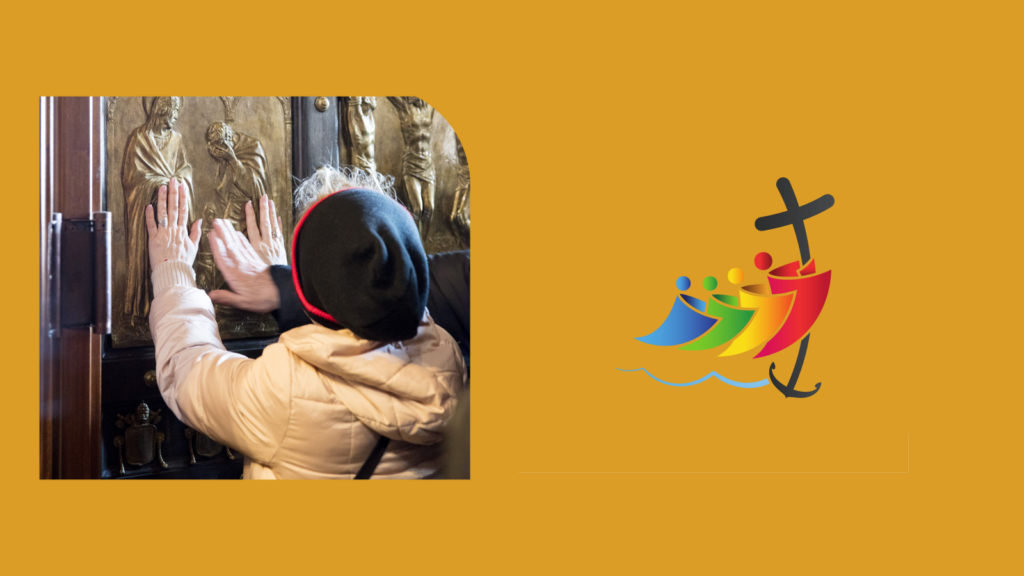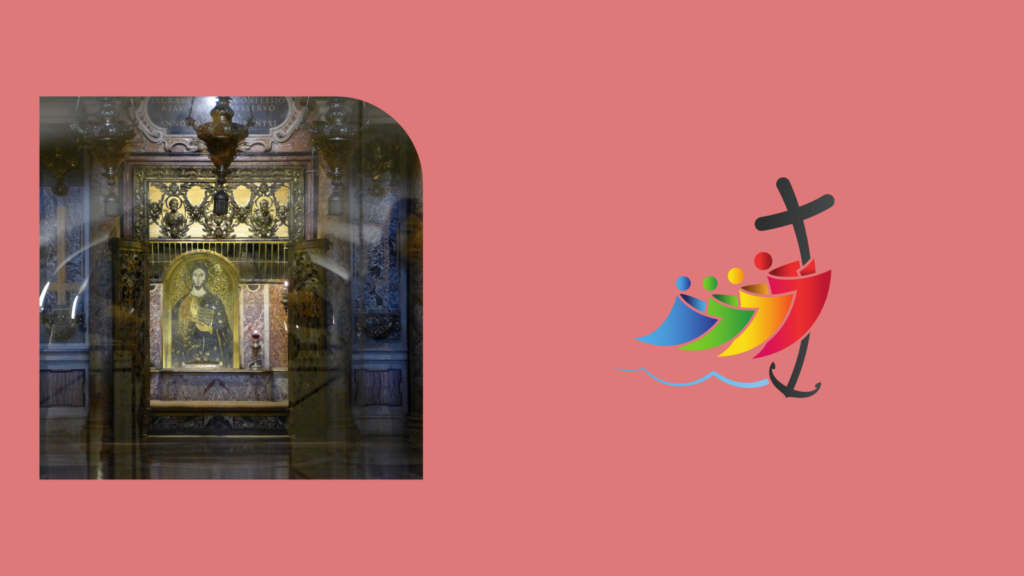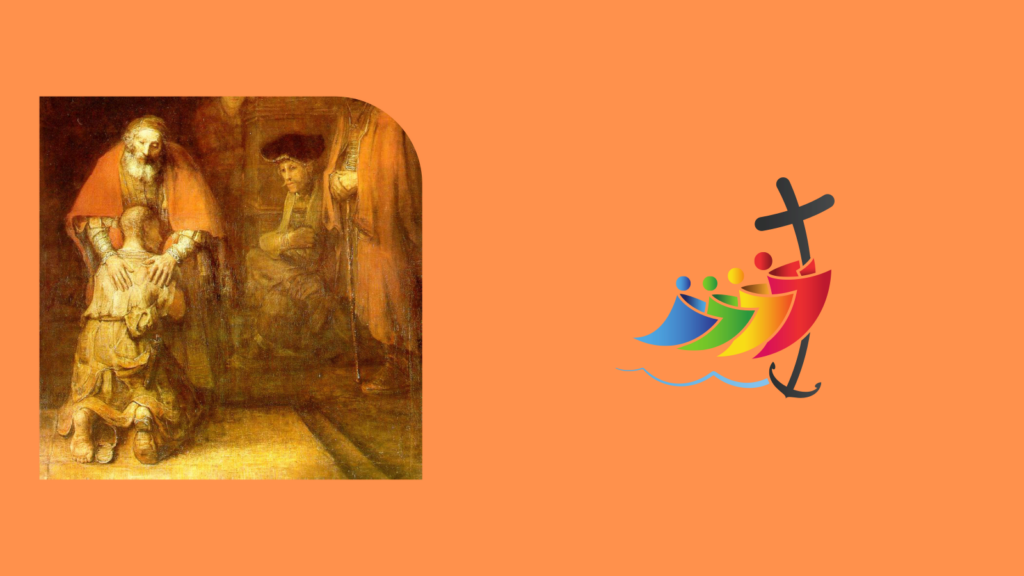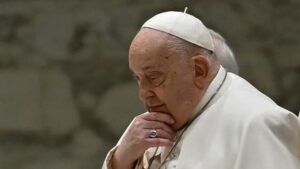“Jubilee” is the name of a particular year, apparently derived from the instrument used to indicate its beginning: the yobel, the sheep’s horn, whose sound heralds the Day of Atonement (Yom Kippur). This feast takes place every year, but takes on special significance when it coincides with the start of the Jubilee year. The first idea of it can be found in the Bible: it was to be convened every 50 years, as it was the “extra” year, to be lived every seven weeks of years (cf. Lev 25:8-13). Although difficult to realize, it was proposed as an opportunity to restore the correct relationship with God, between people and with creation, and involved the forgiveness of debts, the return of alienated lands and the resting of the earth.
Quoting the prophet Isaiah, the Gospel of St. Luke also describes Jesus’ mission: “The Spirit of the Lord is over me; therefore he anointed me and sent me to bring glad tidings to the poor, to proclaim release to the captives and sight to the blind; to set at liberty those who are oppressed, to proclaim the Lord’s year of favor” (Lk 4:18-19; cf. Is 61:1-2). These words of Jesus also became actions of liberation and conversion in the daily life of his encounters and relationships.
In 1300, Boniface VIII convened the first Jubilee, also known as the “Holy Year”, because it’s a time when we experience how God’s holiness transforms us. The cadence has changed over time: at first, every 100 years; it was reduced to 50 years in 1343 by Clement VI and to 25 years in 1470 by Paul II. There are also “extraordinary” jubilees: for example, in 1933, Pius XI wanted to recall the anniversary of the Redemption, and in 2015, Pope Francis launched the Year of Mercy. The way in which the Jubilee Year is celebrated has varied: originally, it coincided with a visit to the Roman Basilicas of St. Peter and St. Paul, then with a pilgrimage. Later, other signs were added, such as the Holy Door. By participating in the Holy Year, we experience a plenary indulgence.
A jubilee process is lived out with a spirit of faith, a filial adherence to God, a real conversion of heart, a concern to build a more humane and fraternal world around us, the act of setting out to make a passage from death to life, from darkness to light.
The Church proposes seven distinct and complementary jubilee signs.
- The Pilgrimage

Jubilee requires us to set out on a journey and cross certain boundaries. When we move, we’re not just changing places, we’re changing ourselves. That’s why it’s important to prepare, to plan the journey and to know the destination. In this sense, the pilgrimage that characterizes this year begins before the journey itself: its starting point is the decision to make it. The etymology of the word “pilgrimage” speaks for itself, and has undergone few changes in meaning. The word, in fact, comes from the Latin per ager, meaning “across fields”, or per eger, meaning “border crossing”: both roots recall the distinctive aspect of undertaking a journey.
In the Bible, Abraham is described as a person on the move: “Leave your country, your kindred and your father’s house” (Gen 12:1). With these words begins his adventure, which ends in the Promised Land, where he is described as a “wandering Aramean” (Dt 26:5). In the same vein, Jesus’ ministry is identified with a journey from Galilee to the Holy City: “As the days were fulfilled when he would be lifted up on high, he made a firm decision to set out for Jerusalem” (Lk 9:51). He himself called his disciples to follow this path, and even today, Christians are those who follow him and follow in his footsteps.
The journey, in fact, is built up gradually: there are several itineraries to choose from, places to discover; situations, catecheses, rites and liturgies, companions on the journey allow us to enrich ourselves with new content and perspectives. Contemplation of creation is also part of this, and helps us learn how caring for it “is an essential expression of faith in God and obedience to his will” (Francis, Letter for the Jubilee 2025). Pilgrimage is an experience of conversion, of changing one’s existence to orient it towards God’s holiness. With it, we also make our own the experience of that part of humanity which, for various reasons, is obliged to set out in search of a better world for itself and its family.
- The Holy Door

From a symbolic point of view, the Holy Door takes on a special significance: it is the most characteristic sign, since the aim is to be able to cross it. Its opening by the Pope marks the official start of the Holy Year. Originally, there was only one gate, in the Basilica of St. John Lateran, the cathedral of the bishop of Rome. To enable the many pilgrims to perform the gesture, the other Roman Basilicas also offered this possibility.
As they cross this threshold, pilgrims are reminded of the text from chapter 10 of John’s Gospel: “I am the gate: whoever enters through me will be saved; he will go in and out and find pasture”. The gesture expresses the decision to follow and be guided by Jesus, who is the Good Shepherd. Incidentally, the door is also a passageway leading to the interior of a church. For the Christian community, it’s not just a space of the sacred, to be approached with respect, with appropriate behavior and clothing, but a sign of the communion that binds every believer to Christ: it’s the place of encounter and dialogue, of reconciliation and peace that awaits the visit of every pilgrim, the space of the Church as a community of the faithful.
In Rome, this experience takes on a special significance, as it refers back to the memory of Saint Peter and Saint Paul, the Apostles who founded and formed the Christian community of Rome, and who, through their teachings and example, are a point of reference for the universal Church. Their sepulchre lies where they were martyred; together with the catacombs, it is a place of continuous inspiration.
- Reconciliation

The Jubilee is a sign of reconciliation, opening up a “favorable time” (cf. 2Co 6:2) for our own conversion. By moving towards Him and recognizing His primacy, God is placed at the center of our own existence. The call in the Bible for the restoration of social justice and respect for the earth is also born of a theological imperative: if God is the Creator of the universe, we must give Him priority over all reality and over partisan interests. It is He who makes this holy year holy by giving it His holiness.
As Pope Francis reminded us in the Bull of Indiction for the 2015 Extraordinary Holy Year: “Mercy is not contrary to justice, but illustrates God’s behavior towards the sinner, offering him a new opportunity to repent, convert and believe. […]. This justice of God is the mercy granted to all as a grace coming from the death and resurrection of Jesus Christ. The Cross of Christ is therefore God’s judgment on each of us and on the world, since it gives us the certainty of love and new life.” (Merciful Vultus, n. 21).
In concrete terms, this means experiencing the sacrament of reconciliation, taking advantage of this time to rediscoverthe value of confession and personally receive God’s word of forgiveness. Some jubilee churches offer this possibility on an ongoing basis. You can prepare for it by following the steps below.
- Prayer

There are many ways and many reasons to pray, but at the root of it all is the desire to open up to God’s presence and offer of love. The Christian community feels called and knows that it can only address the Father because it has received the Spirit of the Son.
Indeed, it was Jesus who entrusted his disciples with the Our Father prayer, also commented on in the Catechism of the Catholic Church(CCC 2759-2865). Christian tradition offers other texts, such as the Ave Maria (Hail Mary), which help us find the words to address God: “It is through a living transmission, Tradition, that, in the Church, the Holy Spirit teaches God’s children to pray”(CCC 2661).
Moments of prayer during the journey show that the pilgrim has God’s ways “in his heart” (Ps 83:6). It is for this reason that moments of respite and pause are provided in the various stages, often set around stores selling religious articles, sanctuaries, or other particularly spiritually rich places, where the pilgrim realizes that – before and alongside him – other pilgrims have passed and that paths of holiness have traversed these same routes. Indeed, the roads leading to Rome often coincide with the paths of numerous saints.
- Liturgy

The liturgy is the public prayer of the Church: according to the Second Vatican Council, it is the “culminating point towards which all her action tends” “and, at the same time, the source from which all her energy springs”(Sacrosanctum Concilium, 10). At the center of it all is the Eucharistic celebration, where we receive the Body and Blood of Christ: as a pilgrim, he himself walks alongside the disciples and reveals the secrets of the Father to them, so that they can say: “Stay with us, for the day is waning and evening is drawing near” (Lk 24:29).
A liturgical rite characteristic of the Holy Year is the opening of the Holy Door: until the last century, the Pope began, more or less symbolically, by demolishing the wall that sealed it. Then the masons would remove the bricks completely. Since 1950, the wall has been demolished first and, during a solemn choral liturgy, the Pope pushes open the door from the outside, and passes through it as the first pilgrim. This and other expressions that accompany the Holy Year underline the fact that the Jubilee pilgrimage is not an intimate, individual act, but a sign of the journey of all God’s people towards the Kingdom.
- Profession of Faith

The profession of faith, also known as the “symbol”, is a sign of recognition proper to the baptized; it expresses the central content of the faith and summarizes the main truths that a believer accepts and bears witness to on the day of his or her baptism, and shares with the entire Christian community for the rest of his or her life.
There are many different professions of faith, all demonstrating the richness of the experience of encountering Jesus Christ. Traditionally, however, those that have gained particular recognition are two: the baptismal creed of the Church of Rome and the Nicene-Constantinopolitan creed, elaborated in 325 by the Council of Nicea, in what is now Turkey, and then perfected in the Council of Constantinople in 381.
“Indeed, if your lips confess that “Jesus is Lord” and your heart believes that God raised him from the dead’, you will be saved. For faith from the heart obtains righteousness, and confession from the lips obtains salvation.” (Rom 10:9-10). This text from Saint Paul emphasizes that proclaiming the mystery of faith requires a profound conversion not only in one’s own words, but also and above all in one’s own vision of God, oneself and the world. “To recite the Creed in faith is to enter into communion with God the Father, the Son and the Holy Spirit, and also to enter into communion with the whole Church, which transmits the faith to us and within which we believe”(CCC 197).
- Indulgence

Indulgence is a concrete manifestation of God’s mercy, which transcends and transforms the limits of human justice. This treasure of grace made history in Jesus and in the saints: by looking to these examples and living in communion with them, the hope of forgiveness and the path to holiness are strengthened and become certain. Indulgence enables us to free our hearts from the weight of sin, so that the reparation due can be freely made.
In concrete terms, this experience of mercy involves a number of spiritual actions indicated by the Pope. Those who, due to illness or other reasons, are unable to be pilgrims are nevertheless invited to take part in the spiritual movement that accompanies this Year, by offering up their suffering and their daily lives, and by taking part in the Eucharistic celebration.



